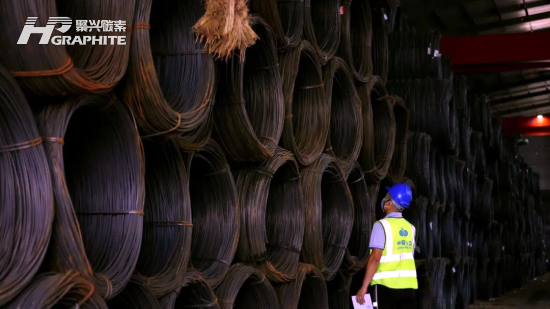【Steel Market Outlook】Steel Prices Bottom Out with Fluctuations – Will Pressure Persist in May?

With the growth of electric arc furnace steelmaking and the new energy industry, the needle coke market has broad prospects, especially driven by the demand for high-power graphite electrodes.
【Steel Market Outlook】Steel Prices Bottom Out with Fluctuations – Will Pressure Persist in May?
In April, rebar prices broke down rapidly, hitting a low of RMB 3,033/ton before the decline slowed. Recent data shows that although apparent demand for rebar continues to recover, the increase is limited and currently at a seasonal peak, with demand expected to decline. Under these conditions, rebar lacks strong support, and after a brief pause, the market is still likely to face downward pressure.

On April 18, the 14th China Steel Logistics Summit Forum, hosted by the China Federation of Logistics and Purchasing and Zall Steel Chain, was held in Shanghai. Chen Yuqian, Deputy Secretary-General of the China Iron and Steel Association, stated that strong supply and weak demand remain the main contradiction in the steel industry. He predicted that China's total steel consumption will continue to decline in 2025, with exports dropping sharply.Chen emphasized that in the context of significantly reduced demand, intensified "involution-style" competition will only worsen the industry's predicament.
Analyzing historical data, Chen pointed out that apparent steel consumption rose yearly since 2016, peaked in 2020, and has declined annually over the past five years. In 2024, China's crude steel output decreased by 17.38 million tons year-on-year (a 1.7% decline), and apparent consumption fell by 43.98 million tons (a 4.7% drop). Overall, strong supply and weak demand remain the core issue.
From January to February this year, real estate remained in a bottoming-out phase, infrastructure growth slowed significantly, while manufacturing continued to support steel demand. Chen believes that although industries like automobiles, home appliances, and shipbuilding will keep growing and provide some demand support, it won't be enough to offset the decline in steel demand from construction. He also noted that the U.S. imposing reciprocal tariffs globally may heavily impact China's indirect steel exports, leading to a sharp drop in exports.
Since early 2025, steel prices have fluctuated slightly. In April, affected by U.S. tariffs, steel prices declined to some extent. According to China Iron and Steel Association members, while profit margins in Jan–Feb 2025 remained low, they were still better than the past two years, and Q1 industry profits are expected to improve compared to the same period last year.
Chen views the steel industry as transitioning from "incremental development" to "decremental development and stock optimization." This market adjustment stems from the long-term downward trend in total steel consumption and is expected to be a deep and prolonged adjustment.
He mentioned that in Q1, some steel enterprises expanded production when profits slightly improved. However, under declining demand, such “involution-style” competition will only deepen industry difficulties. "Industry players must stay strategically focused and avoid the vicious cycle of ramping up production when prices rise, leading to overcapacity and losses," said Chen.
The International Monetary Fund (IMF) recently released its latest World Economic Outlook, lowering its 2025 global growth forecast to 2.8%, down 0.5 percentage points from January. The new U.S. tariff policy is expected to negatively impact the global economy overall.
In 2025, global economic development and the commodity market remain uncertain. In the short term, commodity markets like steel are under pressure. Future attention should focus on how infrastructure development and improved trade conditions worldwide may impact steel and commodity demand. Before the May Day holiday, the steel market may fluctuate at low levels.
Looking at Q2 2025, the supply-demand balance for metallurgical coke and coking coal is expected to remain loose, with high inventories putting continued pressure on prices. In the short term, watch for the sustainability of rigid demand recovery, actual reductions in coal imports, and sentiment recovery. These could trigger short-term price rebounds. In the medium to long term, weak fundamentals will likely prevent sustained price rises, and the effects of international trade frictions also warrant close attention.
Feel free to contact us anytime for more information about the EAF steelmaking market. Our team is dedicated to providing you with in-depth insights and customized assistance based on your needs. Whether you have questions about product specifications, market trends, or pricing, we are here to help.
No related results found








0 Replies